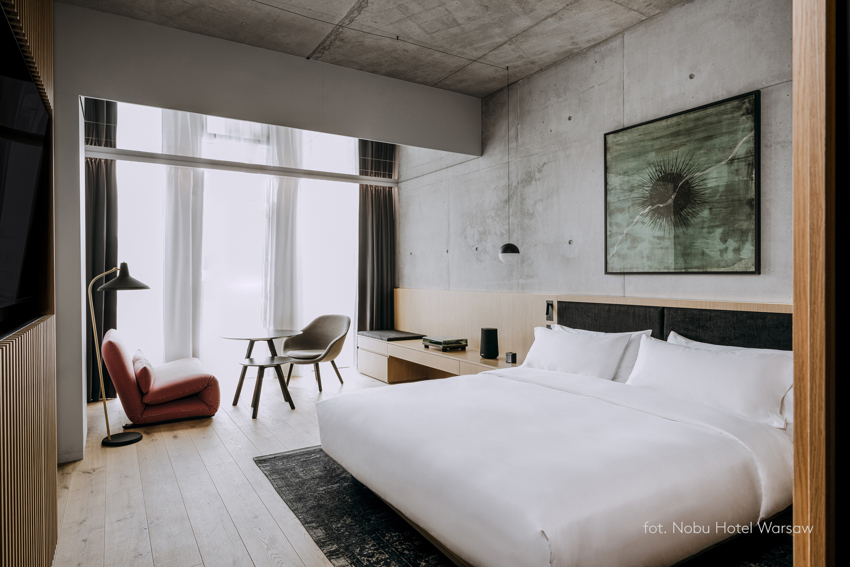Changes in the hotel industry
It can be assumed that the indoor climate in the guest’s room is the most critical from a satisfactory perspective. However, today we tend to use more facilities in a hotel than before - the gym, the restaurant, the lobby or conference center for work alone, or work in group. With that said, it is important to ensure a good indoor climate in all premises of a hotel.
Today’s hotel requires a good indoor climate
It is impossible not to mention the changes that the hotel industry have been forced to face due to the pandemic. The indoor climate was mentioned in previous section and its importance can today not be emphasized enough. Many hotels are today on a journey towards a healthy and comfortable indoor climate, sometimes starting from a fairly basic level.
Hotels with good standard ventilation, heating and cooling (HVAC) solutions may think of their properties as ready to welcome their returning guests, but it is important to be aware that the existing HVAC solution might be unsuitable for a refurbished space or changed activity patterns in the premises. And also, today’s hotel guests have additional requirements.
Sources: Bohlman, John (2021) How access to air quality info can increase hotel occupancy I Laube, Larina Maira (2022) 3 arguments why monitoring your hotel's indoor air quality is crucial
Learn more about key principles
Refurbishment and new guest patterns
Restaurants
Many hotels are making adjustments to their common areas in order to make sure that all guests feel safe and comfortable during their stay. Major changes are for instance made to hotel restaurants where the busy morning buffet is exchanged for a spaced seated breakfast, which consequently requires a different layout of the floor area and at times also more space as waiting times make guests sit longer.
For some hotels the seated meals model is not economically viable, they might instead offer a grab-n-go concept which in turn requires a staffed, or non-staffed, pick-up place instead of a large restaurant. There is also an alternative of expanded room services – either in the form of in-room kitchenettes or as delivered meals to the door. All implicating new needs and new requirements for the HVAC solution.
Sources: Nuel, Jean Philippe (2021) Expert's voice: The intersections of tomorrow's hotel industry I Goldman, Michael (2021) 4 changes for hotels post-covid
LOBBIES AND CONFERENCE FLOORS
More space is also needed in many lobbies, partly to make it less crowded and partly to make room for digital check-in counters, QR-code stations or other digital solutions that can handle check-in and guest inquiries without a staffed counter. The lobby might also be attractive to use for other purposes, work for instance.
Several conference floors are almost certainly being renovated as new needs have arisen. It is not only the regular meetings that are expected to return, there is an anticipated need for office space, co-working stations and room for hybrid-events, all with technology that allows digital work. It is likely that easy-to-clean surfaces, natural materials and biophilic design will be widely introduced in these areas to ensure safe spaces and to create a recognition of the presumed safer outdoors. As many factors impact on the indoor climate, all these changes must be considered when creating comfortable indoor environments.
Sources: Gensler (2021) Design forecast 2022 I Bishop, Tom (2021) Expert's voice: Hotel design in a new landscape
Factors affecting the indoor climate
A hotel may also be a workplace
Adjustments in hotels may primarily be thought of in the context of guests returning, but many hotels are also considering changes to make their employees feel safe and comfortable at work. Changes that are believed to also slow down employee turnover.
Think about the restaurant for instance – orders, and payment, may be solved digitally, no “waiter area” is needed for menus and cash register, but meals are served at the table. This will change the activity and layout of a restaurant area.
The hotels’ back of house may change to allow new ways to manage everyday operation. Typical office duties are expected to need less space as work is carried out on individual tablets and completely online, instead of at shared desks with running meters of binders. Depending on the pandemic’s interference of everyday life it may be prioritized to create large dedicated areas for deliveries with enhanced ventilation and sanitation possibilities.
Sources: Bohlman, John (2021) How access to air quality info can increase hotel occupancy I Bangwal, D., Suyal, J. and Kumar, R. (2022) Hotel building design, occupants' health and performance in response to covid 19